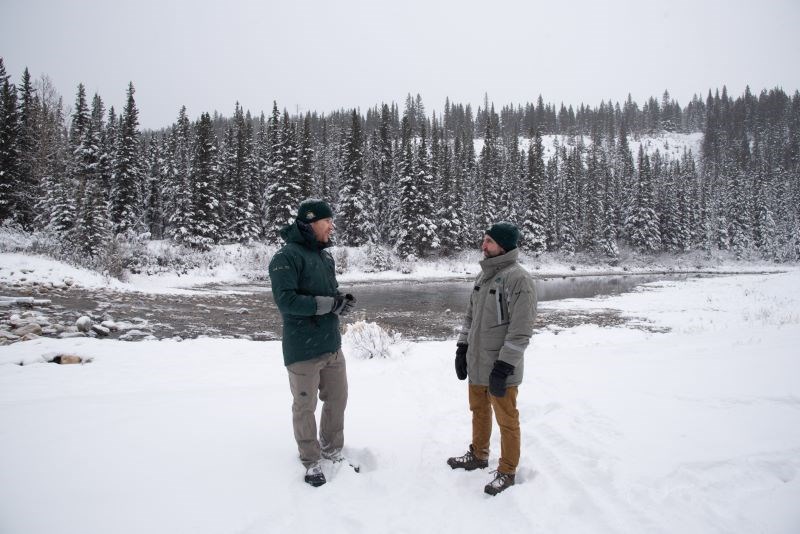
Peter Shokeir | [email protected]
The Government of Canada is investing $14.7 million towards fighting aquatic invasive species in five mountain national parks, including Jasper.
Steven Guilbeault, federal minister of Environment and Climate Change and minister responsible for Parks Canada, announced the funding on Dec. 4.
“Healthy rivers, lakes and streams support the health of the environment as a whole,” Guilbeault said in a news release.
“With this investment Parks Canada is taking action to work collaboratively with Indigenous groups, provincial partners and many other stakeholders to support the protection of aquatic ecosystems and recovery of species at risk, while providing Canadians with opportunities to learn about and enjoy these protected places.”
The funding will be spent on conservation projects over the next five years within Jasper, Banff, Kootenay, Waterton Lakes and Yoho national parks.
Out of this new funding, $3.73 million will be spent in Jasper National Park.
Aquatic invasive alter aquatic ecosystems, cause irreversible damage, impact vulnerable species at risk and spread downstream beyond park boundaries through the interconnected river systems.
They are commonly transported by people.
The mountain national parks are particularly vulnerable to aquatic invasive species due to the high amount of water recreationists who visit each year.
Invasive mussels are particularly concerning, since they deplete available nutrients, altering water chemistry and quality, which ultimately affects the entire food web.
Parks Canada also wants to prevent a parasite that causes whirling disease, which leads to skeletal deformities for native species.
The $14.7 million investment will help fund programs to prevent and educate against the spread of aquatic invasive species.
"Our government is taking action to protect waterways in Alberta and British Columbia’s beautiful national parks,” said Tourism Minister Randy Boissonnault in the news release.
“We are helping to ensure our ecosystems remain protected for generations to come.”
Besides limiting recreation in and on the water, Parks Canada says the best way to protect against these invasive species is by ensuring all watercraft and recreational gear are properly cleaned, drained and dried before they are moved between water bodies.
Clean, Drain, Dry certification is also mandatory in Banff, Kootenay, Waterton Lakes and Yoho national parks and is a best practice for water recreationists across Canada.
- Clean all mud, sand, plant, and animal materials from your watercraft and aquatic recreational equipment such as boats, stand-up paddleboards, fishing gear, and water toys and inflatables.
- Drain coolers, buckets, compartments, and other items that may hold water.
- Dry all watercraft and aquatic recreational equipment completely and for 48 hours before entering any river, lake or stream.
- Dry for a minimum of 30 days after being used in the United States or provinces other than British Columbia, Alberta, Yukon and/or the Northwest Territories before entering any river, lake or stream.



